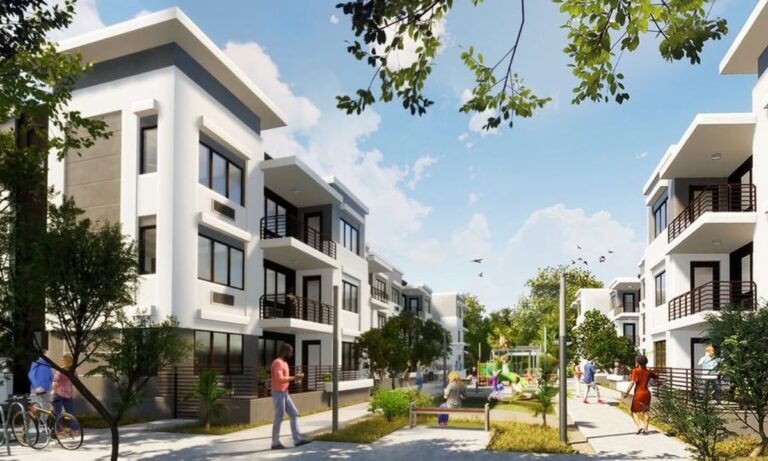
India’s cities and towns are already feeling the impacts of climate change: more intense heat waves, heavier and erratic monsoon downpours, coastal storms, and widespread flooding. Climate-resilient infrastructure is no longer optional- it is essential for protecting lives, livelihoods, and the long-term viability of development investments.
Understanding what climate-resilient infrastructure means in the Indian context, the components and finance models that enable it, and the lessons emerging from case studies such as Ahmedabad’s Heat Action Plan and Surat’s flood-resilience strategy can help other cities adapt and scale effective solutions.
What is climate-resilient infrastructure (CRI)?
Climate-resilient infrastructure is designed and operated to anticipate, absorb, adapt to, and rapidly recover from climate shocks and stresses (heat, floods, cyclones, droughts, sea-level rise). It combines technical design (e.g., raised road levels, stormwater capacity), nature-based solutions (mangroves, wetlands, urban green corridors), institutional measures (early warning systems, coordinated operations), and finance/maintenance plans so that infrastructure continues delivering services under changing climate conditions. Investing in CRI reduces future repair and economic losses and protects vulnerable communities.
Why India needs CRI now
- Rising heat: Large parts of India are becoming heat-vulnerable, with increased frequency of extreme heat days that endanger public health, productivity, and electricity systems. Cities must plan for heat in urban design and public health systems.
- Floods and coastal risks: Urban floods driven by extreme rainfall, blocked waterways, and coastal storm surge have caused repeated damages to homes, industry, and transport corridors. Strengthening urban drainage, embankments, and natural waterways is urgent.
- Economic exposure: Infrastructure assets – roads, energy, water treatment plants, ports – represent decades of investment; their failure has cascading socio-economic impacts. Global and Indian guidance stresses mainstreaming resilience into planning and finance.
Key components of effective climate-resilient infrastructure
- Risk-informed planning & design – use downscaled climate projections, hazard mapping, and stress-testing of assets.
- Nature-based solutions – integrate wetlands, mangroves, urban parks, and permeable surfaces to absorb floodwaters and reduce heat islands.
- Redundancy & flexibility – design networks (energy, water, transport) with alternative pathways and modular systems that can be isolated or ramped up when needed.
- Early warning & operations – real-time monitoring, reservoir operation protocols, and citizen alert systems are often the difference between manageable events and disasters.
- Governance & finance – clear institutional roles, maintenance funding, and blended financing (public, private, MDBs, climate funds) to ensure build and upkeep.
Policy & institutional context in India
India’s disaster and climate frameworks are increasingly focused on resilience. The National Disaster Management Authority (NDMA) issues guidelines on hazard preparedness and sectoral resilience, while national climate strategies recommend integrating climate risk into infrastructure planning. Global technical resources and compendia (e.g., CDRI, GCA handbook) provide practical tools for engineers and urban managers to mainstream resilience into projects. Strengthening state and city capacities remains a priority.
Case Study 1 – Ahmedabad: Heat Action Plan (HAP) – a public-health model of resilience
Ahmedabad pioneered South Asia’s first municipal Heat Action Plan after a catastrophic 2010 heat wave. The HAP combined early warning forecasting, public outreach, training for health workers, heat-proofing of public shelters, and coordination between meteorological services and municipal departments. The plan evolved into annual HAPs, toolkits for other cities, and measurable public-health benefits – reduced heat-related morbidity and greater public awareness. Ahmedabad’s experience shows resilience need not be limited to physical structures; public-health systems and community outreach are core infrastructure for heat resilience.
Lessons for other cities
- Integrate forecasting + health response protocols.
- Invest in low-cost interventions (cooling centers, public advisories) alongside long-term urban greening.
- Build replicable toolkits and institutional memory.
Case Study 2 – Surat: Flood-resilience through engineering, operations, and community systems
Surat – a low-lying port city on the Tapi – has a multi-pronged flood-resilience history including embankments, improved reservoir operations upstream (Ukai dam), storm-drain expansion, creek restoration, early warning systems, and community preparedness. Post-flood reforms combined structural works with operational changes (regulated reservoir releases, early alerts) and, more recently, efforts to restore natural waterways and remove encroachments that exacerbate flooding. Surat’s strategy demonstrates that combining hard engineering with better operations and governance reduces flood exposure.
Lessons for other cities
- Coordinate upstream reservoir management with downstream urban operations.
- Restore and protect natural channels; removing encroachments can be as important as new drains.
- Use early warning and community mobilization to reduce damages and enable timely evacuations.
Financing and scaling resilience
A mix of tools is working in India and globally: climate-tagged budgets, green bonds, concessional MDB loans, resilience grants, and public-private partnerships with resilience clauses. Mainstreaming resilience into procurement, asset valuation, and project appraisals (i.e., requiring climate risk assessments) prevents rebuilding the same vulnerabilities. International handbooks and the G20/COP frameworks emphasize blending finance and technical assistance for wider uptake.
Practical roadmap for Indian cities and states
- Start with risk mapping: heat maps, flood corridors, coastal surge zones.
- Prioritize no-regret measures: green cover, permeable surfaces, upgraded drainage, cool roofs.
- Embed operations: reservoir release protocols, emergency response drills, and data-driven early warnings.
- Design for flexibility: modular water plants, microgrids, and multipurpose public spaces.
- Mobilize blended finance: access climate funds, green bonds, and municipal revenue streams for maintenance.
- Engage communities: awareness campaigns, local volunteers, and inclusive design for the most vulnerable.
Resilience is an investment, not a cost
Climate-resilient infrastructure saves lives, reduces long-term repair bills, and preserves economic productivity. India’s path – from Ahmedabad’s public-health led heat plan to Surat’s integrated flood measures – shows resilience is multidisciplinary: engineering, nature-based design, governance, finance, and strong community linkages. Cities that plan with climate risk at the centre will protect people and ensure that infrastructure continues serving society through a hotter, wetter, and more uncertain future.






